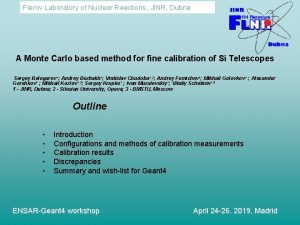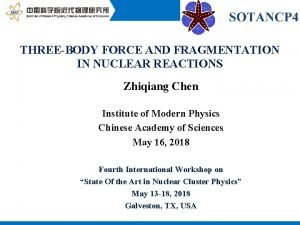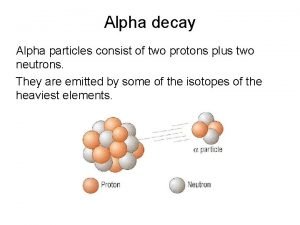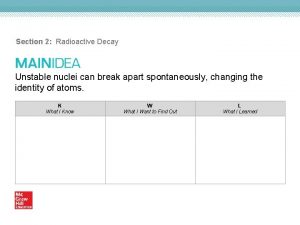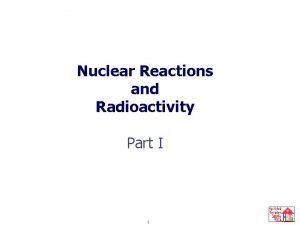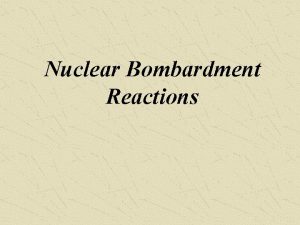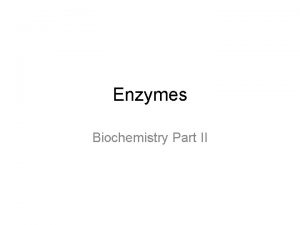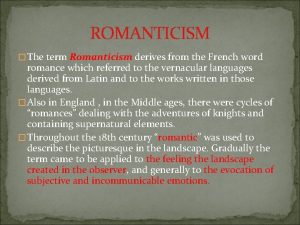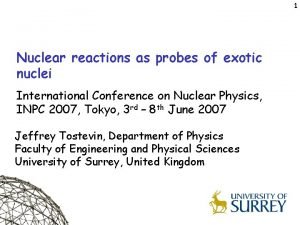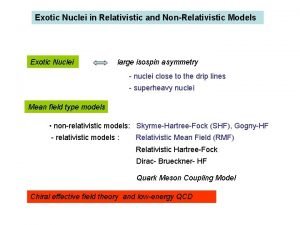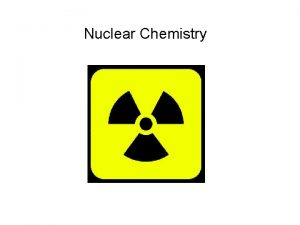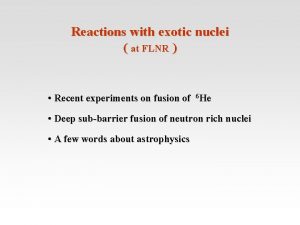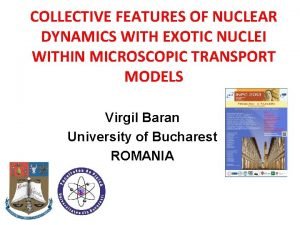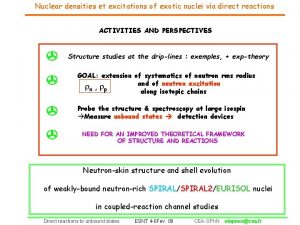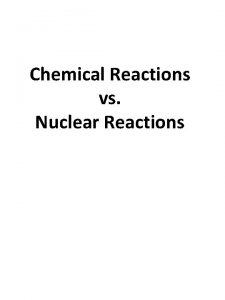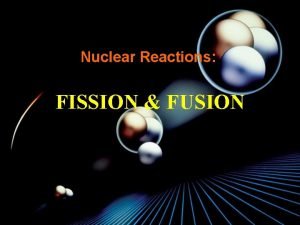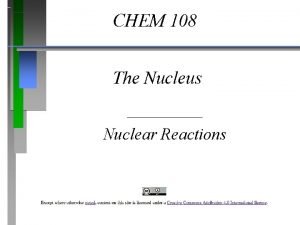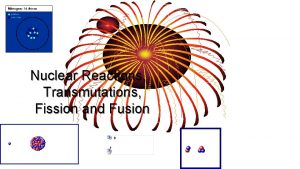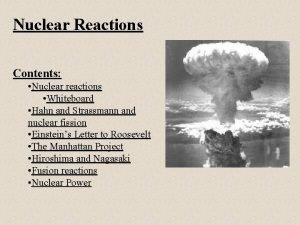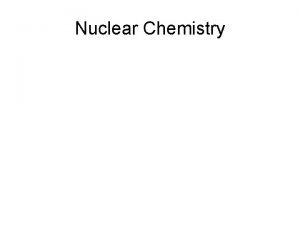Nuclear reactions with exotic nuclei role of the



















- Slides: 19

Nuclear reactions with exotic nuclei: role of the continuum Krzysztof Rusek Heavy Ion Laboratory of the University of Warsaw, Poland

Overview Coupling effects with the continuum have a long history going back nearly forty years. This contribution is not meant as a review but rather as a presentation of a few examples where the couplings play an important role. : - coupling effects can be measured - coupling and fusion - correlations of valence neutrons

Real and virtual processes Virtual couplings (polarizability) – processes whereby, for example, the projectile nucleus is raised to an excited state which then decays back to the ground state before the projectile has traversed the field of the target nucleus. core Target N. Keeley et al. Progress in Particle and Nuclear Physics 63, 396 (2009)

Experiments with polarized 6, 7 Li beams (1970’s – 1990’s) Dieter Fick, Univ. Marburg Garry Tungate, Univ. Birmingham Kirby W. Kemper, Florida State Univ.

Coupling with 3+ resonance 6 Li + 58 Ni ? resonance α+d breakup threshold g. s. 6 Li H. Nishioka et al. , NPA 415, 230 (1984)

Comparison of 6 Li-6 He No E 1 Reduced Coulomb-nuclear interference peak for 6 He, caused by Coulomb dipole couplings to the continuum

Model: Continuum-Discretized Coupled -Channels An extension of coupled channels technique to allow the treatment of couplings to unbound states, both resonances and non-resonant continuum. It was first developed to describe the effect of breakup couplings on deuteron elastic scattering.

CDCC in action L. Acosta et al. Dot-dashed: no dipole couplings Dashed: no couplings to the continuum

Dynamic Polarization Potential V = Vo + i W + DPP N. Keeley et al. PRC 88, 017602 (2013)

Fusion – enhancement below the Coulomb barrier

6 He + 206 Pb at 18 Me. V L. Standylo et al. PRC 87 064603 (2013) R. Wolski et al. EPJA 47, 111 (2011) 6 He beam 6 He + 206 Pb experiment at the Cyclotron Research Centre in Louvain-la-Neuve

Spectra Forward angle Backward angle elastic alphas Optimum Q-values are different from expected!

Coulomb post-acceleration D Z 1 6 He energy at D: E D = E – Z 1 Z 2 e 2/D Z 2 α energy at the detector: 4/6 ED + Z 1 Z 2 e 2/D = 4/6 E + 1/3 Z 1 Z 2 e 2/D ~3 Me. V Breakup occurs at D ~ 25 fm

6 He+208 Pb – a very few reaction channels open 6 He 4 He L. Acosta et al. PRC 84, 044604

CRC result: elastic scattering CRC, one parameter varied („ 2 n coupling strength”)

CRC result: alpha – particles yield 2 n- transfer c. c. – 149 mb 1 n – transfer c. s. – 155 mb Breakup c. c. – 151 mb Fusion – 32 mb (exp. 48+-5 mb) breakup and n-transfer channels dominate below the barrier (not fusion)

Pairing in 6 He Enhancement factor – a measure of pairing

Summary • Everything is coupled! • Analysing powers are very sensitive to the coupling effects (new polarized ion sources? ) • Elastic scattering data sets bring a lot of info about couplings (exp. must be precise!) • Separation of different contributions important (neutron detectors needed) • Direct reaction models (CDCC, CRC) are well-suited to describe experimental results obtained with light, weakly bound, projectiles at energies around the Coulomb barrier (for limited number of open channels)

Thank you all for the invitation and for your attention!
 Lesson 15 nuclear quest nuclear reactions
Lesson 15 nuclear quest nuclear reactions Fisión nuclear vs fision nuclear
Fisión nuclear vs fision nuclear Flerov laboratory of nuclear reactions
Flerov laboratory of nuclear reactions Nuclear reactions are at
Nuclear reactions are at Natural transmutation equation
Natural transmutation equation Carbon 14 decay equation
Carbon 14 decay equation Key terms radioactivity and nuclear reactions
Key terms radioactivity and nuclear reactions Balancing nuclear reactions
Balancing nuclear reactions Two types of nuclear reactions
Two types of nuclear reactions Nuclear decays and reactions section 2
Nuclear decays and reactions section 2 Activity of radioactive sample
Activity of radioactive sample Nuclear bombardment equation
Nuclear bombardment equation Alpha beta gamma neutron
Alpha beta gamma neutron Unit 5 chemical reactions answers
Unit 5 chemical reactions answers Basic redox reactions
Basic redox reactions Chemical reactions section 2 classifying chemical reactions
Chemical reactions section 2 classifying chemical reactions Chemical reactions section 2 classifying chemical reactions
Chemical reactions section 2 classifying chemical reactions Types of reactions
Types of reactions Www.biology-roots.com
Www.biology-roots.com The cult of the exotic romanticism
The cult of the exotic romanticism


